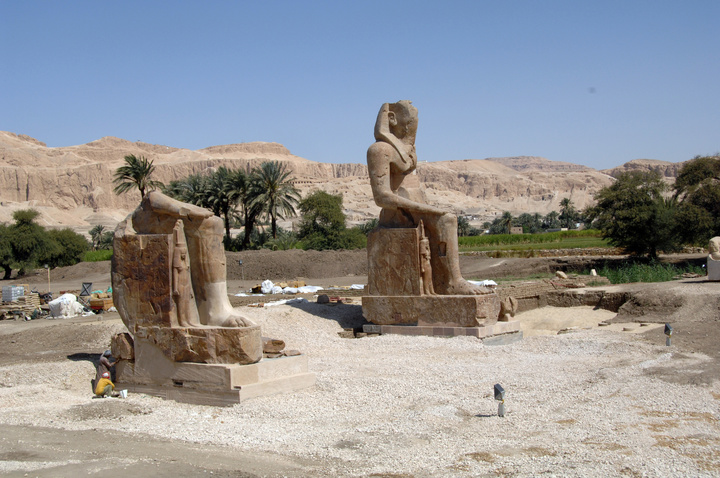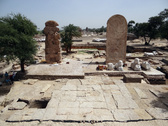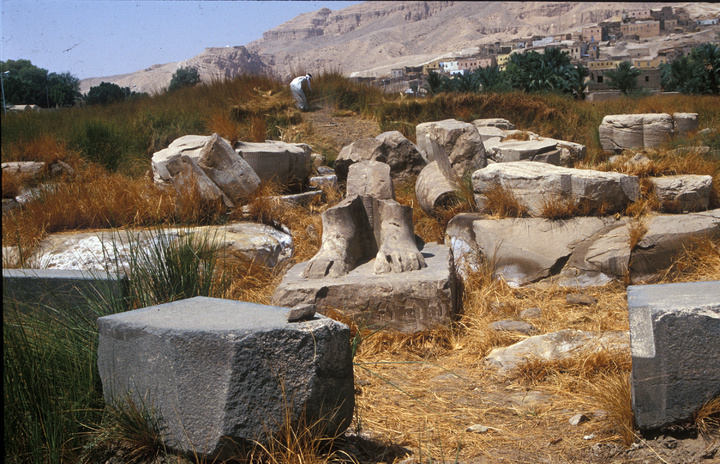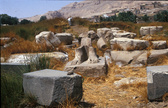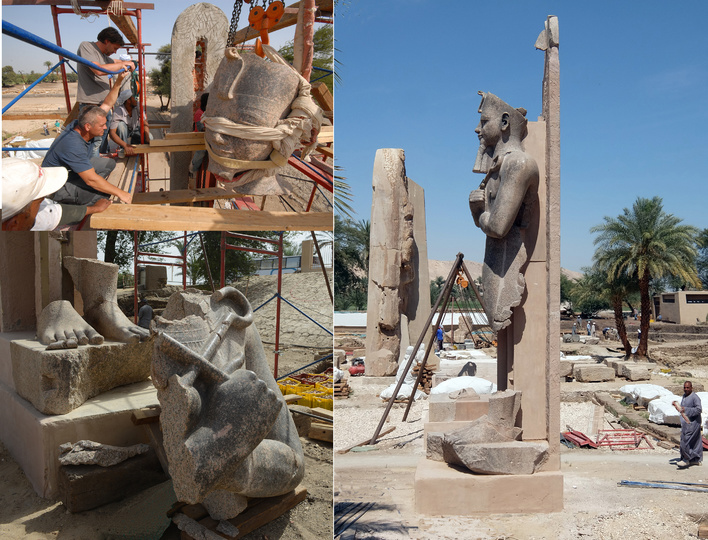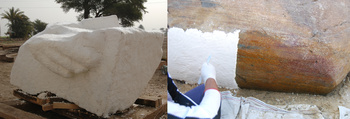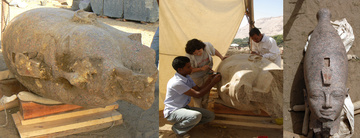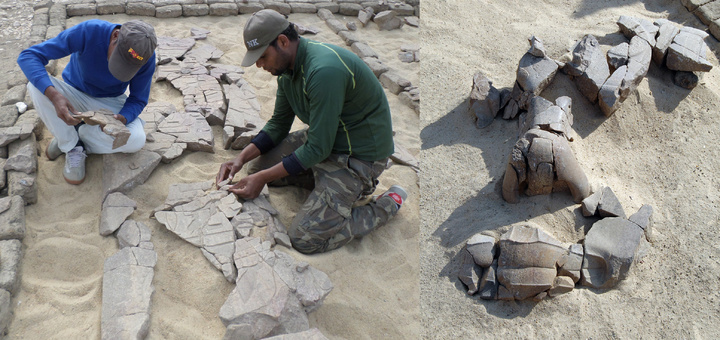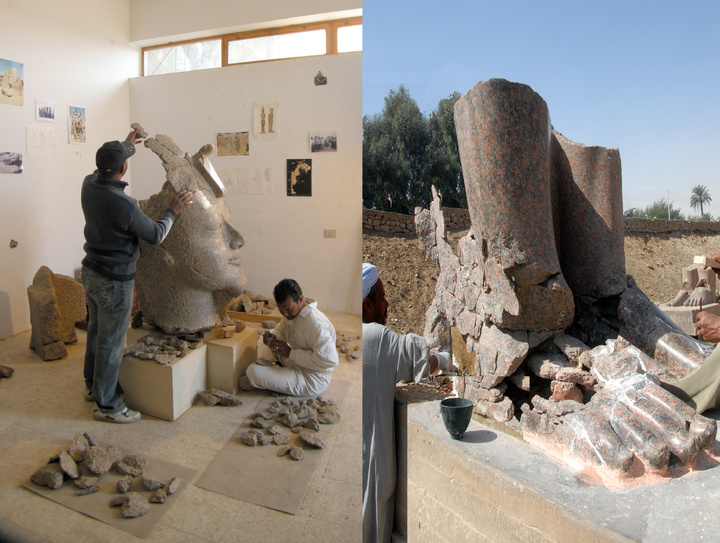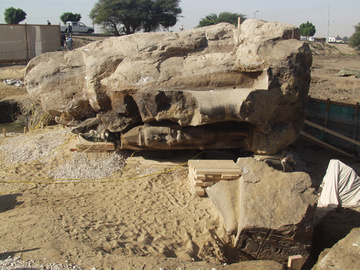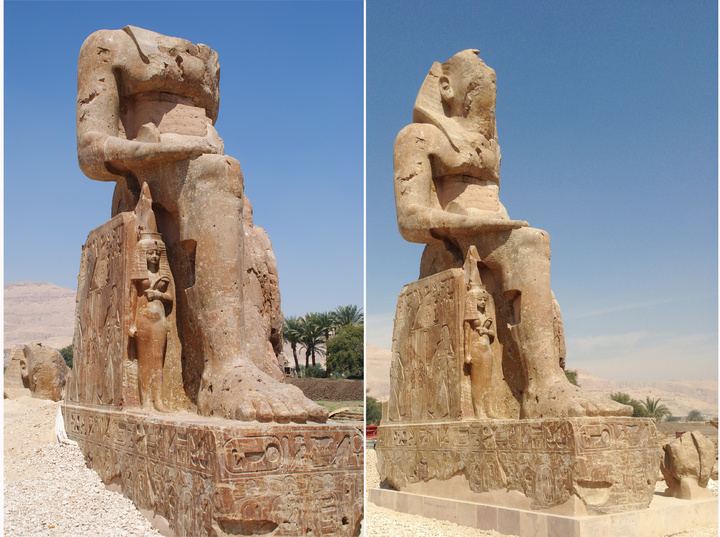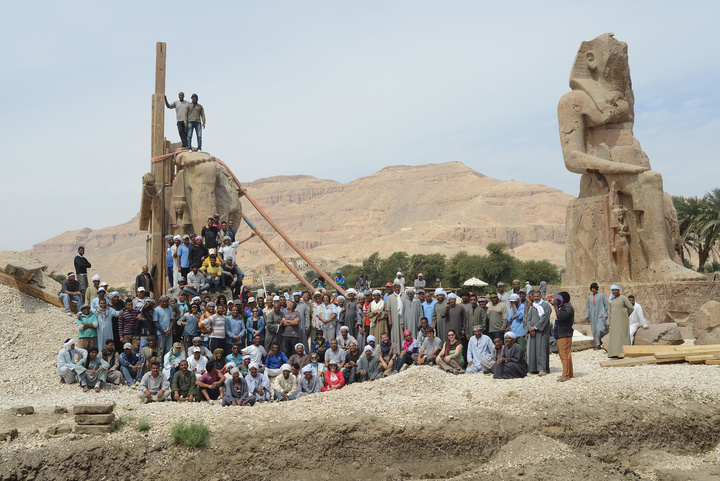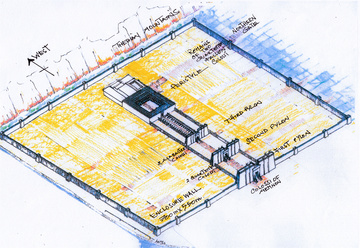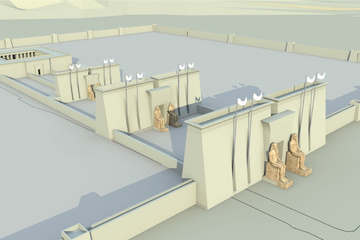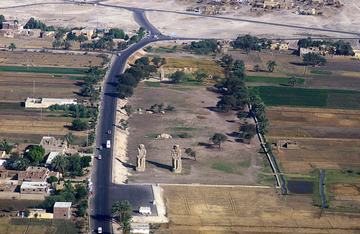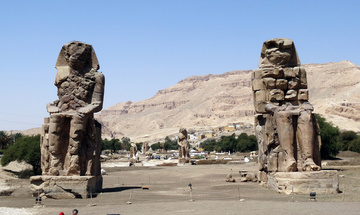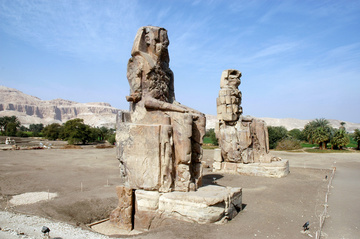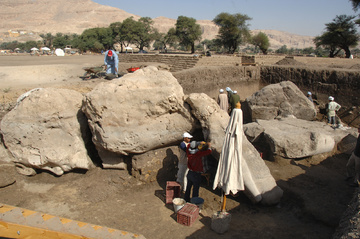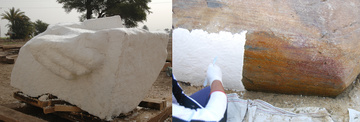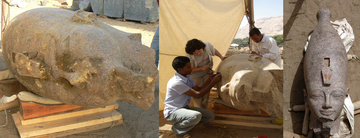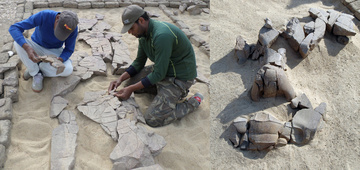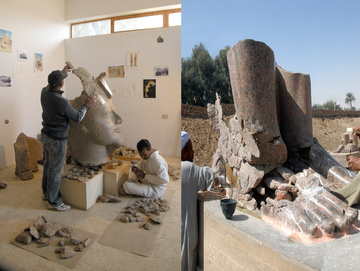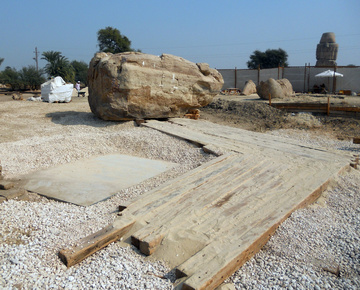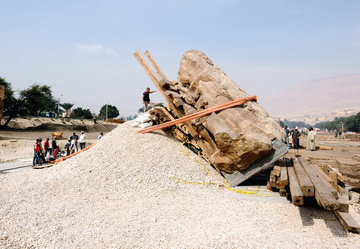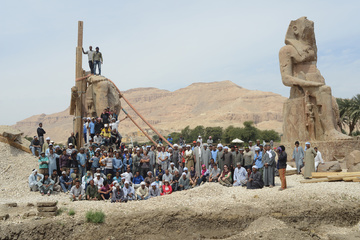Once passed the 55 degrees two hoists were placed from the north at the concrete base to combine both systems and assure the balance. Thus two other hoists were placed in the opposite direction, and anchored to the road with special anchors Hilti HKD 24.
Finally, after reaching 62°, we stopped to use the cushions and continued the work with hoists only, at first with minimal capacity. The centre of gravity gradually switched until the pressure was vertical. During this, the large wooden beams piled under the north edge of the base in order to support the colossus in case of collapse, were progressively removed.
On 13 February 2012, on the sixth working day, i.e. a week after starting the raising operation with one Friday off, the erection work was completed successfully.
In the succeeding spring season 2013, a scaffolding made of large timber balks was built around the colossus to enable the heaving and fixing of detached parts, such as the right knee, the right arm and parts of the torso. Once the scaffolding finished, 2 chain hoist of 20 tons each and a third one of 10 tons were placed in the principal girders.
Piece by piece, the right leg with the royal hand resting on the knee, weighing 22 tons, the part of the chest 17 tons, and the right arm of 5.5 tons were moved on timber ramps and locks, up to the scaffolding and lifting with the help of the chain hoist. The adhesions were reinforced by spikes of steel of diverse size. (Fig. 22)
The next season, in 2014, we could start the operation of lifting the 16ton heavy head up to its original position. The head was first placed behind the back of the colossus. It was lifted up to 1,85 m, with the help of four air cushions (each 1m x 1m) while preparing a gravel ramp of 1,20 m high, with an inclination of less than 1° (gravel size 20mm) leading to the statue. On the top of this ramp was placed a row of two parallel wooden beams (section 40 cm x 40 cm), on which were installed on the iron rolls and the wooden sledge supporting the head (height of rolls and sledge: 20cm). After finishing this operation the air cushions were deflated and taken out, the head was lowered at 5 cm (the necessary height to remove the air cushions) and put on the sledge. The head was then pulled forward on the ramp 14,5 m and placed near to the back of the statue.
The head was lifted in three steps up to the top because we had to change the belts/strings three times. We started lifting the 16 ton fragment to the first floor rate and even a little bit higher to install the first wooden platform then lowered the head on the platform and changed the length of the belt and put the chain hoist again. With the second and third platforms we continued this process and after 3 days the head reached the level of the neck of the colossus. On the fourth day it was advanced to the vertical of the colossus. This step was difficult due to the lateral thrust of the scaffolding. To permanently place the head, it was necessary to change the site to place the sling horizontally. An old crack just opened on the left side of the head was sealed with injections of epoxy and work could continue safely. The almost horizontal fracture of the head facilitated the action of sticking, but made difficult the injection epoxy. It was necessary to open channels in the bonding area, to enable the expansion of the epoxy resin. The joints all around were sealed with lime mortar and Primal, bonded with inorganic pigments. For the injection Huntsman Hardener HY PY 1092 and Araldite1092 was used.
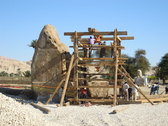
fig. 5.22 Placing the right knee of the North Colossus, with the help of timber scaffoldings.
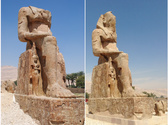
fig. 5.23 The North Colossus just before and after the placement of the head in 2014.
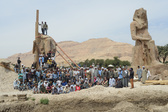
fig. 5.24 The team celebrating the successful raising of the South Colossus in March 2015.





